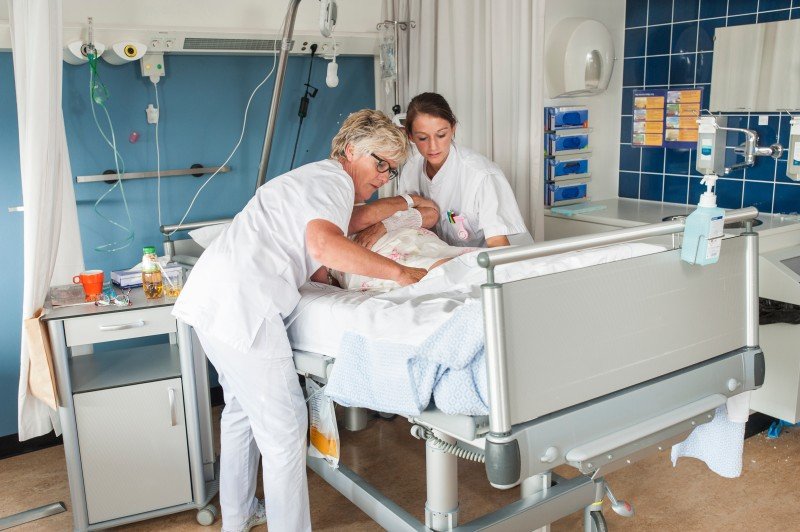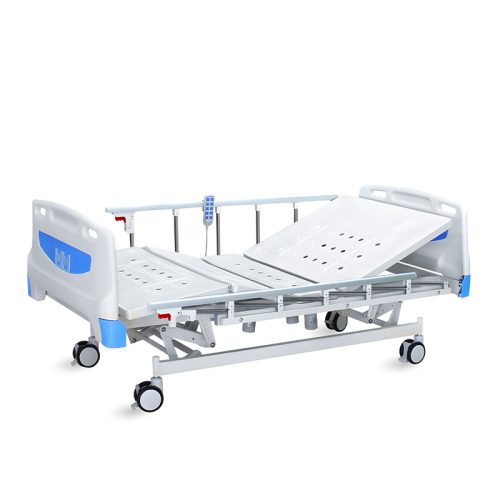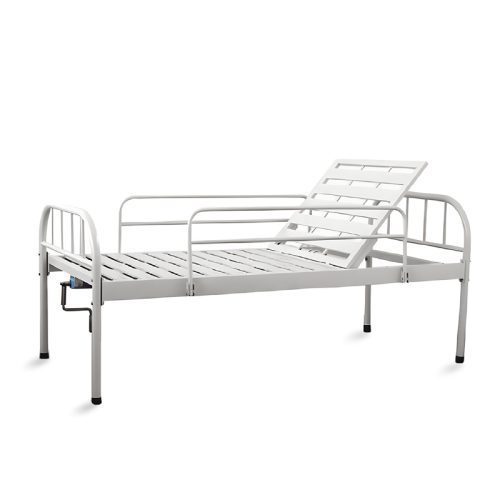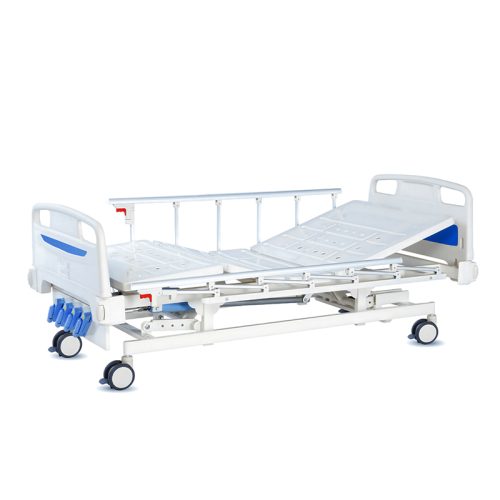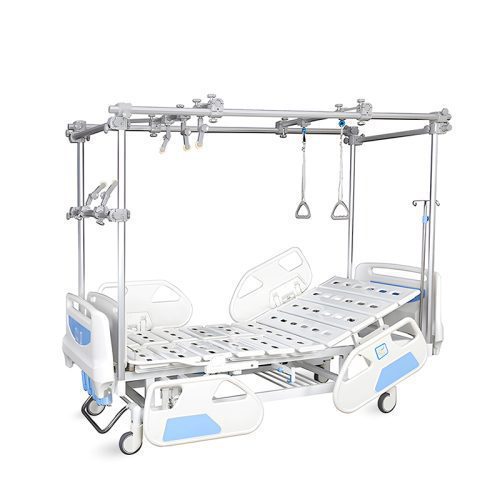
- Cama de hospital
Diferentes tipos de camas hospitalares
- Por kelingmedical
Explore os vários tipos de camas hospitalares, incluindo camas gerais, eléctricas, de UCI, de maternidade, pediátricas e de reabilitação. Saiba mais sobre as suas caraterísticas, aplicações e como cada tipo melhora o conforto, a segurança e os cuidados do doente em diferentes ambientes médicos.
1. General Hospital Bed
- Features:
- Designed for general wards to meet basic patient care needs.
- Typically manual with limited adjustments, often offering simple adjustments for the head or leg sections.
- Relatively low cost, simple structure, and easy to maintain.
- Aplicações: Used for short-term care of patients in regular hospital rooms.
2. Electric Hospital Bed
- Features:
- Equipped with electric adjustments that allow the bed height, backrest, and leg positions to be controlled with a remote or control panel.
- Provides more comfort and convenience, especially for patients with long-term immobility.
- Some advanced models feature memory functions that save common bed position settings.
- Aplicações: Used in premium hospital rooms, long-term patient care.
3. ICU Bed (Intensive Care Unit Bed)
- Features:
- Designed to support the connection of life-monitoring equipment and medical devices such as ventilators and infusion pumps.
- Highly adjustable for quick and efficient patient positioning, especially during critical situations.
- Smart features, including automatic position adjustments to prevent pressure ulcers.
- Aplicações: Used in Intensive Care Units (ICU) for patients requiring continuous monitoring and intensive care.
4. Maternity Bed
- Features:
- Specially designed for childbirth, with features that facilitate different positions during labor.
- Includes detachable leg rests, hand grips, and back support devices.
- Some models are designed with newborn care areas integrated into the bed.
- Aplicações: Used in delivery rooms, maternity wards.
5. Pediatric Bed
- Features:
- Smaller in size to match the proportions of children.
- Higher safety rails to prevent children from falling off.
- Often designed with colorful, cartoon-like elements to ease anxiety in young patients.
- Aplicações: Used in pediatric wards.
6. Rehabilitation Bed
- Features:
- Equipped with assistive features that help patients sit or stand, supporting their recovery and rehabilitation process.
- Designed for physical therapy, with adjustable surfaces that allow the patient to simulate standing or walking.
- Aplicações: Used in rehabilitation centers or long-term care hospitals.
7. Psychiatric Bed
- Features:
- Focuses on safety, with designs that prevent patients from injuring themselves or others, such as rounded edges and no sharp corners.
- Often features soft, padded surfaces to reduce the risk of harm.
- Aplicações: Used in psychiatric wards for patients with mental health disorders.
8. Folding or Mobile Bed
- Features:
- Lightweight and foldable, making it easy to transport or store in limited space.
- Some designs are used in emergency medical situations, such as in ambulances or mobile medical units.
- Aplicações: Used in emergency rooms, disaster medical response, or mobile healthcare units.
9. Specialized Medical Beds
- Burn Unit Bed:
- Designed for burn patients, with surfaces that prevent skin sticking and are easy to clean.
- Dialysis Bed:
- Tailored for kidney dialysis patients, providing features like adjustable backrests to improve comfort during long treatments.
- Pressure Ulcer Prevention Bed:
- Equipped with air-circulating mattresses that help distribute pressure and prevent pressure ulcers.
10. Smart Bed
- Features:
- Integrates Internet of Things (IoT) and Artificial Intelligence (AI) technologies.
- Equipped with sensors for monitoring vital signs and automatic position adjustments.
- Remote control options allow caregivers to manage bed settings remotely, and some beds link to hospital systems for real-time data sharing.
- Aplicações: Used in high-end hospital rooms, home care settings.
Conclusão
The variety of hospital bed types reflects the evolving needs of patients and healthcare environments. From basic manual beds to highly sophisticated smart beds, each type is designed to provide optimal care, comfort, and functionality for specific medical conditions. The right bed for each patient ensures better recovery, enhances safety, and streamlines healthcare operations.
📧 Email: inquiry@shkeling.com
🌐 Sítio Web: www.shkeling.com.cn
Estamos ansiosos por construir uma parceria de sucesso consigo!
Publicações relacionadas
Tornemo-nos parceiros de confiança

